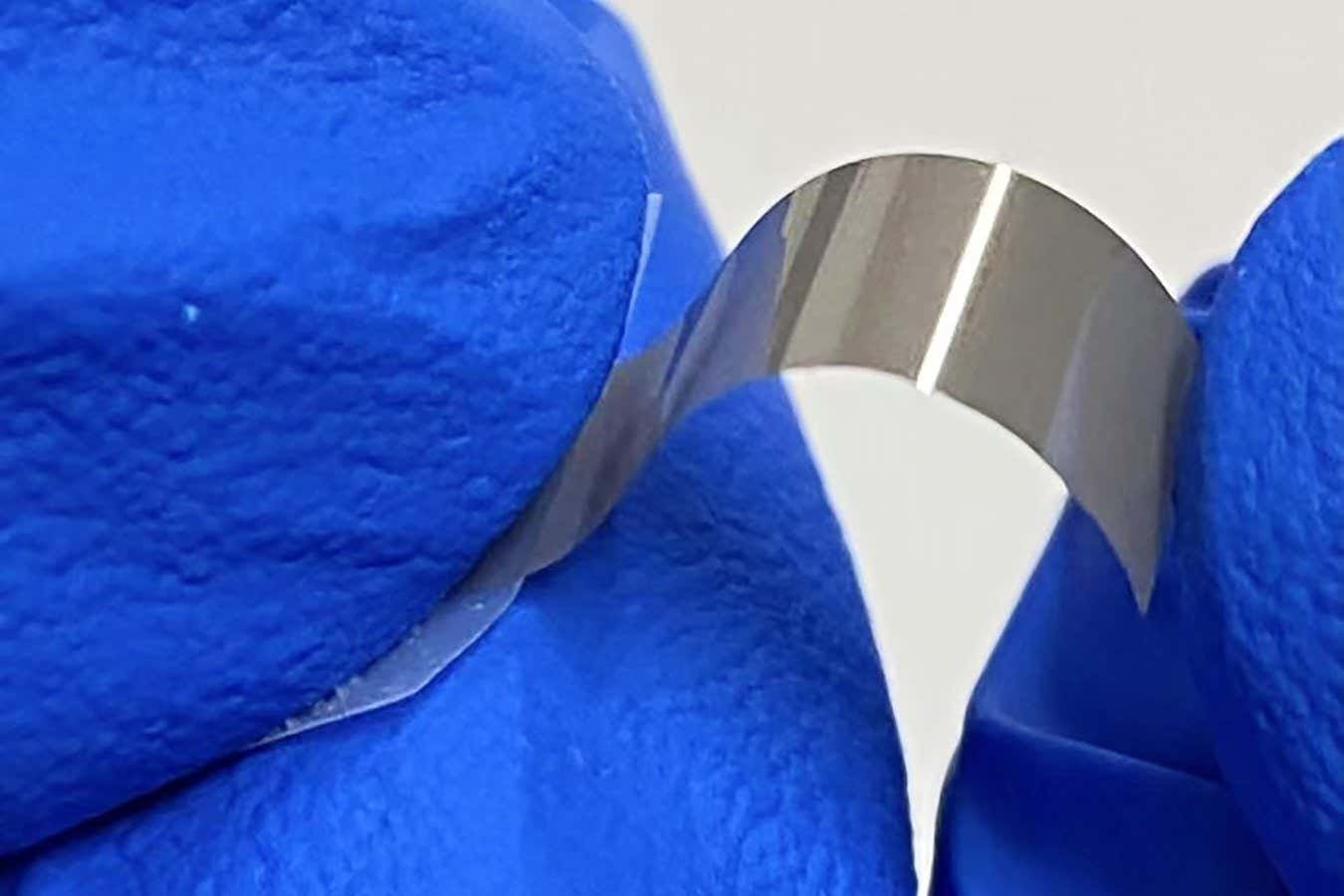This thin disc of diamond is also very flexible
Nature, DOI: 10.1038/s41586-024-08218-x
A new way to make ultra-thin diamond wafers using sticky tape could help produce diamond-based electronics that could one day be a useful alternative to silicon-based designs.
Diamond has unusual electronic properties: it is both a good insulator and allows electrons of certain energies to move with little resistance. This translates into being able to handle higher energies with greater efficiency than conventional silicon chip designs.
However, making working diamond chips requires large and very thin wafers, similar to the thin silicon wafers used to build modern computer chips, which have proven difficult to create.
Now, Zhiqin Chu at the University of Hong Kong and his colleagues have found a way to make extremely thin and flexible diamond wafers using sticky tape.
Chu and his colleagues first implanted nano-sized diamonds into a small silicon wafer, then blew methane gas over it at high temperatures to form a continuous, thin diamond sheet. They then made a small crack on one side of the attached diamond sheet before peeling off the diamond layer with regular tape.
They found that this peeled diamond sheet was both extremely thin, at less than a micrometer, much thinner than a human hair, and smooth enough to allow the kind of etching techniques used to make silicon chips.
“It is very reminiscent of the early days of graphene, when Scotch tape was used to produce the first monolayer of graphene from graphite. I just never would have imagined the concept being applied to diamond,” says Julie Macpherson of the University of Warwick, UK.
“This new edge-exposed exfoliation method will be an enabler for a wide range of device designs and experimental approaches,” says Mete Atatüre of the University of Cambridge. One area it could be particularly useful for is offering greater control in quantum devices that use diamonds as sensors, he says.
The diamond membranes Chu and his colleagues can make are about 5 centimeters across, showing that the method works as a proof of principle, says Andrea Ferrari of the University of Cambridge, but it’s still smaller than the larger 20-30 centimeters that are standard for many wafer processes, and it is not clear whether the new method can be scaled up, he says.
The wafers produced also appear to be polycrystalline, which is less smooth and regular than monocrystalline diamonds, and this may limit its use for some applications, Macpherson says.
Subjects:
